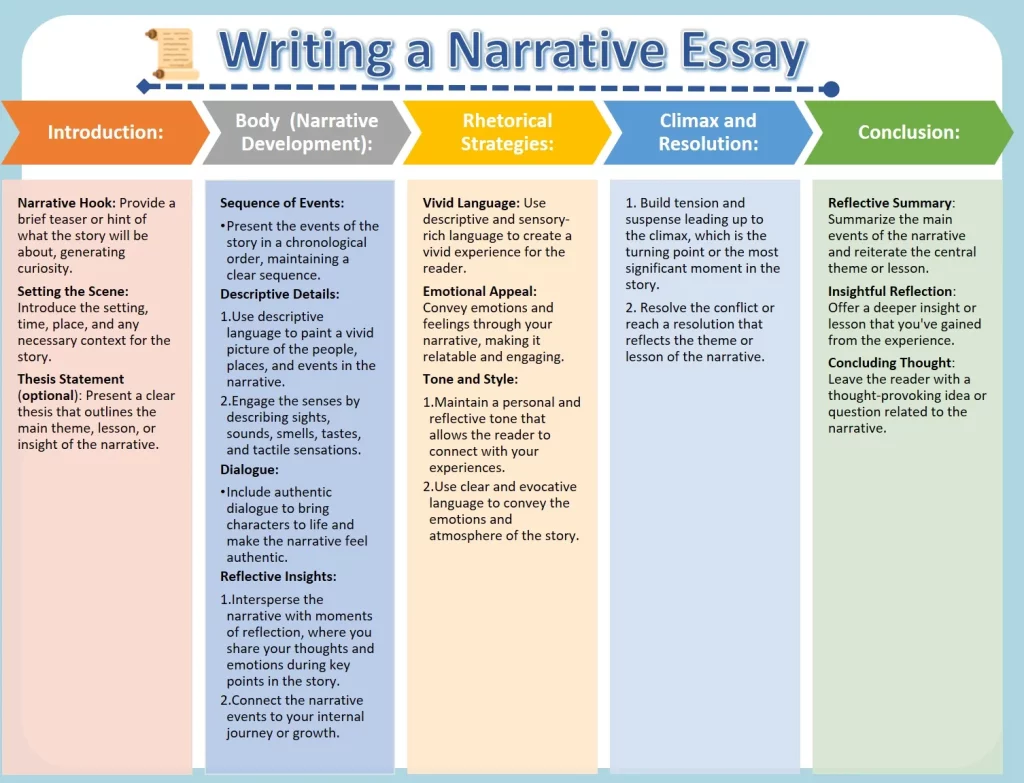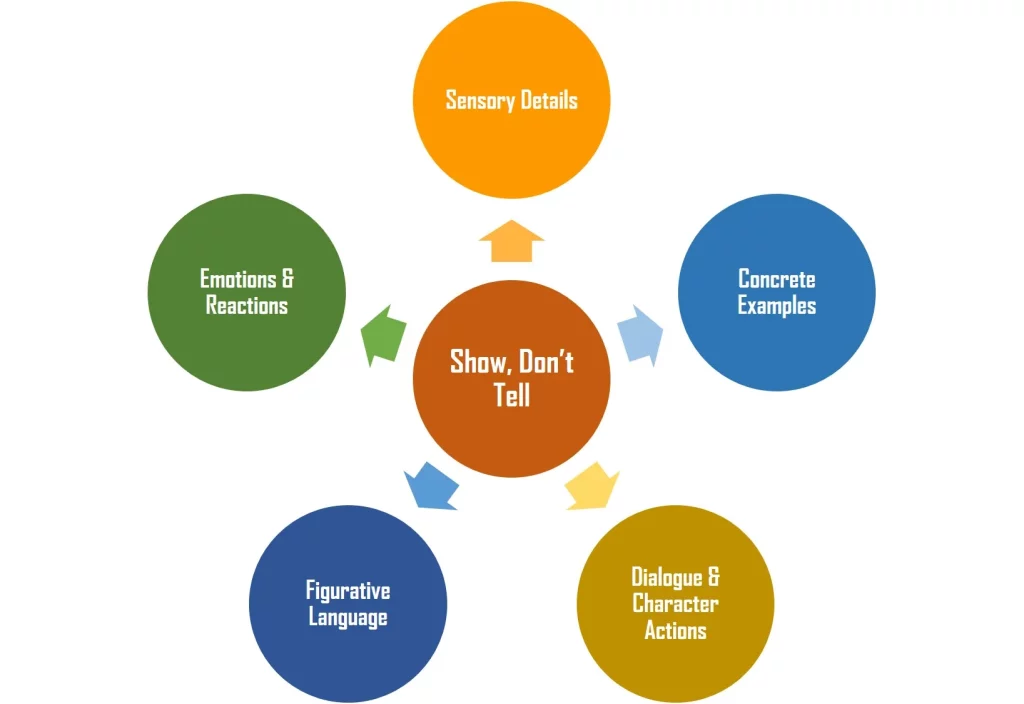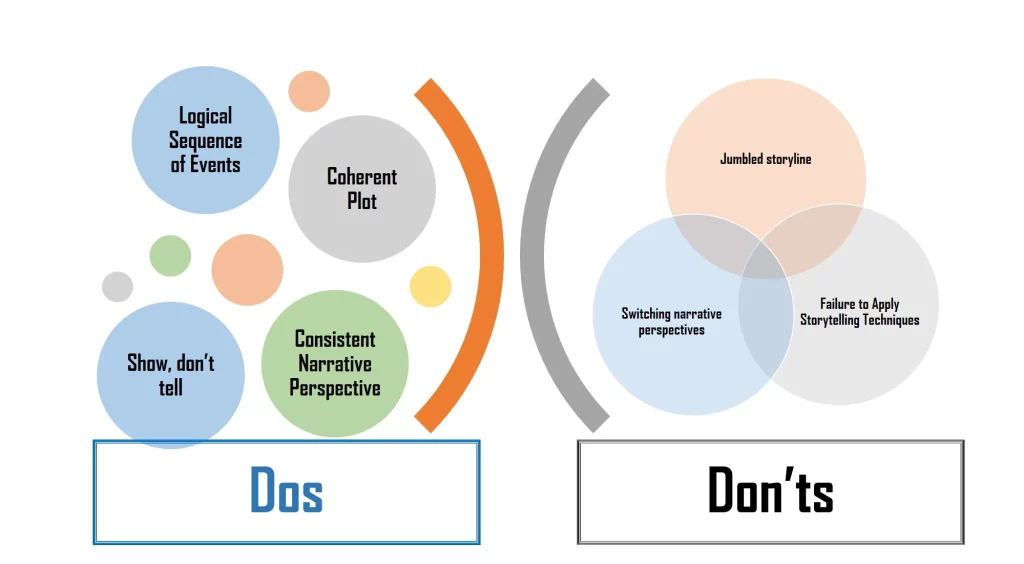 A narrative essay is a type of essay that tells a story or recounts a personal experience. Unlike other types of essays, such as expository or argumentative essays, which primarily focus on providing information or making an argument, a narrative essay centers on storytelling. In a narrative essay, the author shares a real-life experience or event, often from their own perspective, in a way that engages the reader and conveys a particular message or lesson.
A narrative essay is a type of essay that tells a story or recounts a personal experience. Unlike other types of essays, such as expository or argumentative essays, which primarily focus on providing information or making an argument, a narrative essay centers on storytelling. In a narrative essay, the author shares a real-life experience or event, often from their own perspective, in a way that engages the reader and conveys a particular message or lesson.
Here are well-written sample narrative essays tailored for both high school and college students:
Sample Personal Narrative Essay: My First Solo Skydiving Experience
Sample Literacy Narrative Essay: From a Reluctant Reader to a Book Lover
Sample Historical Narrative Essay: The Space Race
Key Features
- Plot: A narrative essay typically has a clear and coherent plot, similar to a short story. It has a beginning (setting), middle (build up and climax), and end (conflict resolution and reflection), with a sequence of events that unfolds in chronological order.
- Characters: Narrative essays often feature characters, which can include the author themselves and other individuals involved in the story. These characters help bring the narrative to life.
- Setting: The setting of a narrative essay provides context for the story. It describes where and when the events took place, helping the reader visualize the scene.
- Point of View: Narrative essays are usually written from the first-person perspective, using pronouns like “I” and “we.” This allows the author to convey their personal thoughts, feelings, and experiences.
- Conflict or Challenge: Many narrative essays involve some form of conflict or challenge that the author faces. This could be a personal struggle, an obstacle to overcome, or a significant event that shapes the narrative.
- Theme or Message: A narrative essay often has a central theme or message that the author wants to convey. This theme may emerge naturally from the storytelling or be explicitly stated in the essay’s conclusion.
- Descriptive Language: To engage the reader and create a vivid picture of the events, narrative essays often use descriptive language and sensory details to make the narrative more immersive.
- Dialogue: Dialogue can be included in a narrative essay to bring conversations between characters to life and add authenticity to the storytelling.
- Logical Flow: A narrative essay usually follows a chronological order, starting from the beginning of the story and progressing towards a resolution or conclusion. However, it can also employ various storytelling techniques, such as flashbacks or foreshadowing, to enhance the narrative’s impact.
- Traditional Essay Structure: A narrative essay usually entails 3 main sections: an introduction, body paragraphs with at least 4 components – build up, climax, resolution, and reflection, – and a conclusion. When writing a narrative essay, it is essential to create a strong introduction that hooks the reader and sets the stage for the story. The body paragraphs should provide the necessary details and develop the plot, while the conclusion should reflect on the experience and convey its significance.
Overall, a narrative essay allows the writer to use storytelling techniques to engage the reader and share a meaningful personal experience or observation. It combines elements of storytelling with the structure and organization of an essay to create a compelling and impactful narrative.
General Outline
- Introduction:
- Body paragraphs:
- Paragraph 1: Set the scene and introduce the characters, time, and place of the story.
- Paragraph 2, 3, etc.: Build up
- Climax:
- Resolution:
- Conclusion:
Remember, this is a general outline, and you can adjust and modify it based on the specific requirements of your essay or the nature of the story you’re telling. The key is to create a well-structured narrative that engages the reader and conveys a meaningful message or lesson.
Types
- Personal Narrative Essay:
- Fictional Narrative Essay:
- Literacy Narrative Essay:
- Autobiographical Narrative Essay:
- Biographical Narrative Essay:
- Descriptive Narrative Essay:
- Argumentative Narrative Essay:
- Expository Narrative Essay:
- Historical Narrative Essay:
These various types of narrative essays offer writers the opportunity to convey their stories, experiences, or ideas in unique ways, allowing for creativity and engagement with readers while serving different purposes and themes.
These types/techniques are not exclusive and multiple techniques are usually combined in a single narrative essay. The beauty of narrative writing is that it allows for flexibility and creativity, so writers can adapt and combine various elements to suit their storytelling purposes.
Easy Steps on How to Write a Narrative Essay
- Choose a topic: Select a specific event or experience that you want to share in your narrative essay. It could be a personal experience, a memorable trip, a challenging situation, or any significant event that holds meaning for you.
- Plan and outline: Create an outline to organize your thoughts and determine the flow of your narrative. Include the key elements such as the introduction, body paragraphs, climax, and conclusion. Outline the main events and details you want to include in each section.
- Develop a captivating introduction:
- Build the body paragraphs:
- Highlight the climax:
- Provide a resolution:
- Conclude with reflection:
- Revise and edit:
Remember to be authentic and honest in your storytelling, allowing your personality and unique voice to shine through. By following these steps and putting your personal touch into the narrative, you can create a captivating and impactful narrative essay.
Developing a Strong Thesis Statement
- Reflect on the significance: Think deeply about the experiences or events you are narrating and consider their broader implications. Ask yourself questions like: What is the main message or lesson that I want the reader to take away from my narrative? What insight or understanding did I gain from this experience?
- Make it specific and focused: Your thesis statement should be clear, specific, and focused on the central theme or idea of your narrative. Avoid vague or general statements. Instead, identify the core message or lesson that you want to convey to the reader.
- Connect it to your narrative: Your thesis statement should directly relate to the events and experiences you are describing in your narrative. It should provide a lens through which the reader can interpret and understand the significance of the story.
- Incorporate reflection: Consider incorporating your personal reflections or insights into the thesis statement. This will help convey the deeper meaning or lesson you learned from the experience.
- Revise and refine: After developing your initial thesis statement, review it to ensure that it captures the essence of your narrative and effectively communicates your intended message. Revise and refine the statement as needed to make it more concise, focused, and impactful.
Here is an example of a strong thesis statement for a personal narrative essay:
“My journey through overcoming adversity, from childhood struggles with dyslexia to becoming a published author, demonstrates the power of resilience and self-belief in the face of life’s challenges.”
Here is an example of a strong thesis statement for a historical narrative essay:
“The Civil Rights Movement’s impact on society, as seen through the eyes of a Civil War soldier, offers a profound perspective on the enduring struggle for equality and justice in America’s history.”
Remember, the thesis statement sets the tone and direction for your narrative essay. It should guide your storytelling and serve as a central thread throughout the essay. By developing a strong and meaningful thesis statement, you provide a clear focus for your narrative and engage the reader with a purposeful message or lesson.
Writing Effective Body Paragraphs

Each body paragraph should focus on a specific event, detail, or aspect of your narrative. Here’s a suggested structure for your body paragraphs; as well as key considerations:
- Topic sentence: Start each body paragraph with a clear and concise topic sentence that introduces the main idea or event you will discuss in that paragraph. The topic sentence should relate directly to your thesis statement and contribute to the overall narrative.
- Supporting details: Provide vivid and specific details that support and expand upon the topic sentence. Use descriptive language, sensory imagery, and dialogue to engage the reader and create a vivid portrayal of the events or experiences.
- Organize chronologically or thematically: Depending on the nature of your narrative, you can organize your body paragraphs in chronological order, following the sequence of events, or you can arrange them thematically, grouping related events or ideas together. Choose the approach that best suits your narrative and helps convey your message effectively.
- Reflection and analysis: Intersperse your personal reflections, thoughts, and emotions throughout the body paragraphs. Share your insights, reactions, and lessons learned from the events described. These reflective elements add depth to your narrative and provide a deeper understanding of the significance of the experience.
- Show, don’t tell: Instead of simply stating how you felt or what happened, show the reader through descriptive language and storytelling techniques. Use vivid descriptions, actions, and dialogue to immerse the reader in the narrative and evoke emotions.
- Transitions: Use transitional phrases or sentences to ensure a smooth flow between paragraphs and connect the different parts of your narrative. Transitions help guide the reader through the story and create coherence within your essay.
Remember to maintain a logical and coherent narrative flow within each body paragraph. Each paragraph should contribute to the overall development of the story and support your thesis statement. By structuring your body paragraphs effectively, you can engage the reader and make your narrative essay more compelling and impactful.
Writing Tips: Dos and Don’ts

Below are the most essential considerations when writing a narrative essay, along with dos and don’ts:
- Logical Structure:
- Coherent Plot:
- Show, Don’t Tell:
- Point of View:
Incorporating these characteristics into your narrative essay will help you create a compelling and engaging piece of writing that immerses the reader in the subject matter. Remember to tailor your approach to the specific topic and purpose of your essay, as these guidelines can be adapted to various narrative writing contexts.
Frequently Asked Questions (F.A.Qs)
-
How does a narrative essay differ from a descriptive essay?
A narrative essay tells a story, often from a personal perspective, with a clear plot, characters, and a sequence of events. It aims to engage the reader by taking them on a journey. In contrast, a descriptive essay focuses on describing a specific object, place, person, or event in detail, aiming to create a vivid sensory experience for the reader without necessarily following a narrative structure.
-
How do I choose a compelling topic for my narrative essay?
Choose a topic that holds personal significance or has had a meaningful impact on your life. Reflect on experiences, moments of growth, challenges overcome, or lessons learned. A compelling topic is one that you can recount with enthusiasm and that resonates with your readers’ emotions.
-
Can I use the first person in a narrative essay?
Yes, using the first person (I, me, my) is common and expected in a narrative essay. It helps create a personal and authentic connection between the writer and the reader, as you are sharing your own experiences and perspective.
-
What are some tips for making my narrative essay engaging and captivating for readers?
-
Are there specific writing techniques or literary devices that work well in narrative essays?
Yes, literary devices like foreshadowing, symbolism, and metaphors can enhance your narrative. Dialogue adds authenticity, and flashbacks or anecdotes can provide context. Use these tools judiciously to enhance your storytelling.
-
How do I revise and edit my narrative essay to make it polished and error-free?
-
What is the importance of storytelling and character development in a narrative essay?
Storytelling makes your narrative essay relatable and engaging. Character development brings your story’s subjects to life, allowing readers to connect with and empathize with them. These elements add depth and resonance to your essay.
-
How can I effectively convey my personal experiences and emotions in a narrative essay?
Remember, the key to writing a successful narrative essay is to engage your readers through compelling storytelling. This involves choosing a meaningful and relatable topic, using vivid descriptions and sensory details, developing well-defined characters, and conveying your personal experiences and emotions authentically. Additionally, maintaining a clear and coherent narrative structure with a captivating beginning, a well-paced middle, and a meaningful conclusion is crucial to keep your readers engaged and leave a lasting impact.
